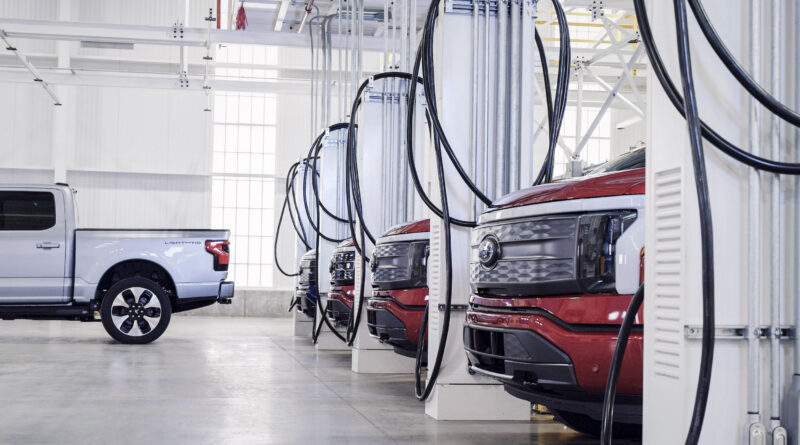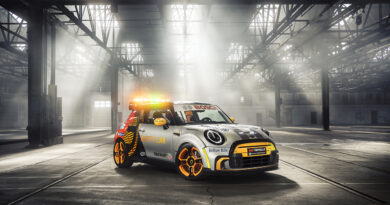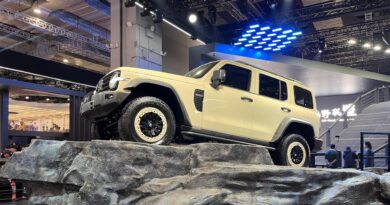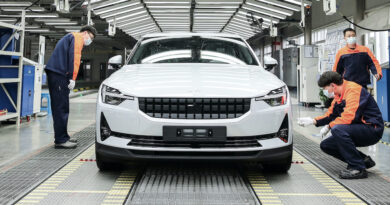Ford F-150 Lightning production begins with more range, power
Ford has begun production of its first electric pickup truck, the F-150 Lightning – and the company that plans to translate its large truck expertise to the EV space is promising the ute will get better with age.
The first owners taking delivery of the new electric ute this month will be getting a vehicle with slightly more power and a higher payload than what was promised during the extensive publicity ramp-up over the past year.
The Lightning uses the same underbody structure and body as the regular F-150 – America’s top-selling pickup truck – but adds electric motors and a battery pack.
Already Ford has been bombarded with unprecedented demand for a ute it originally thought would be a niche addition to the F-150 lineup but one that is fast becoming the main game.
Ford says it has upped the power of the all-electric ute by 26 horsepower on the entry-level model with the standard range battery pack. That amounts to about 19kW extra, for 337kW in total.
READ MORE: F-150 Lightning one step closer to Australia as Ford confirms local conversion of ICE models
READ MORE: EV ute overload: Every electric ute and pickup coming soon
READ MORE: Aussie electric ute plan revealed for Ford Ranger, Toyota HiLux
READ MORE: 5 hybrid and electric Fords in Australia by late 2024, Mustang Mach-E expected … eventually
F-150 Lightnings fitted with the extended range battery now make 580hp (about 433kW) after a 13kW boost. Some models can also travel up to 32km further than originally estimated, with a US EPA range rating of 515km.

Each F-150 Lightning produces the same 1051Nm of torque, making them gruntier than any of the petrol- or diesel-powered F-150s produced to date.
Ford hasn’t detailed how the extra power was made, but it’s likely to have come from the battery side, possibly to do with the software relating to the management of the batter pack.
In an EV it’s typically the battery that is the limiting factor on how much power is delivered to the electric motor/s, which then turn it into energy to move the car. Various EVs use the same electric motor on different models but get additional performance by fitting a bigger battery pack.
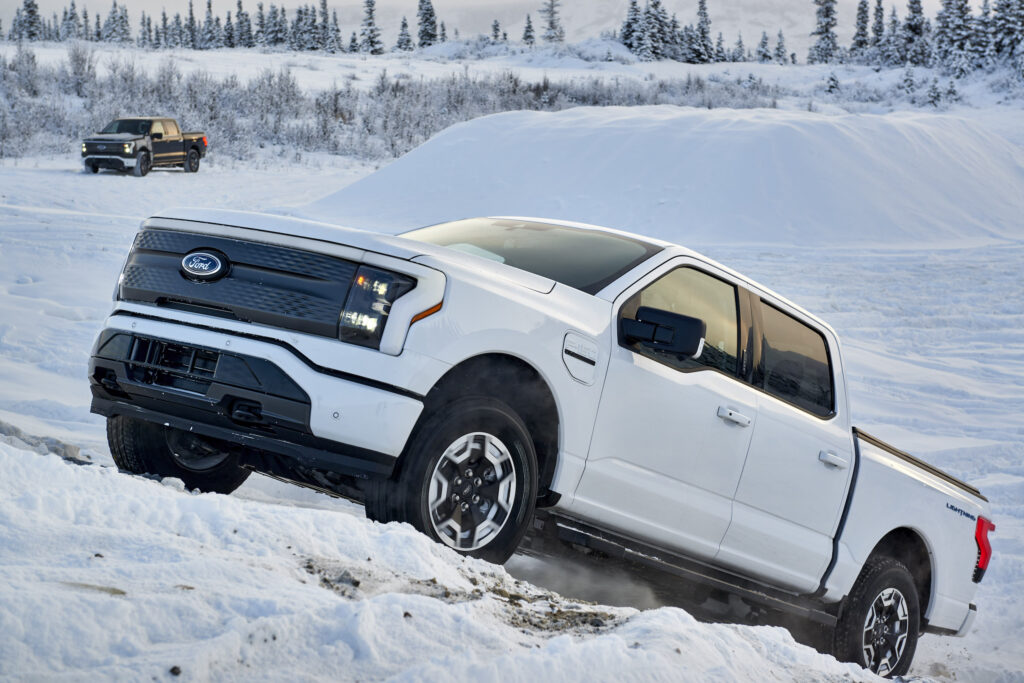
Indeed, software will play a big role on the F-150 Lightning, production of which followed soon after the Rivian R1T that is another of the dozen-plus electric utes set to hit the road in the US.
A week after production of the F-150 Lightning began in Detroit, Ford announced its Intelligent Range software that is used to predict how far the car will travel on the remaining charge.
Ford claims the range predictor has been programmed specifically for towing, something many F-150 Lightning buyers are expected to do.
It takes into account various factors, including speed, ambient temperature, heating/cooling of the cabin, the topography of the planned route and how the driver is driving.
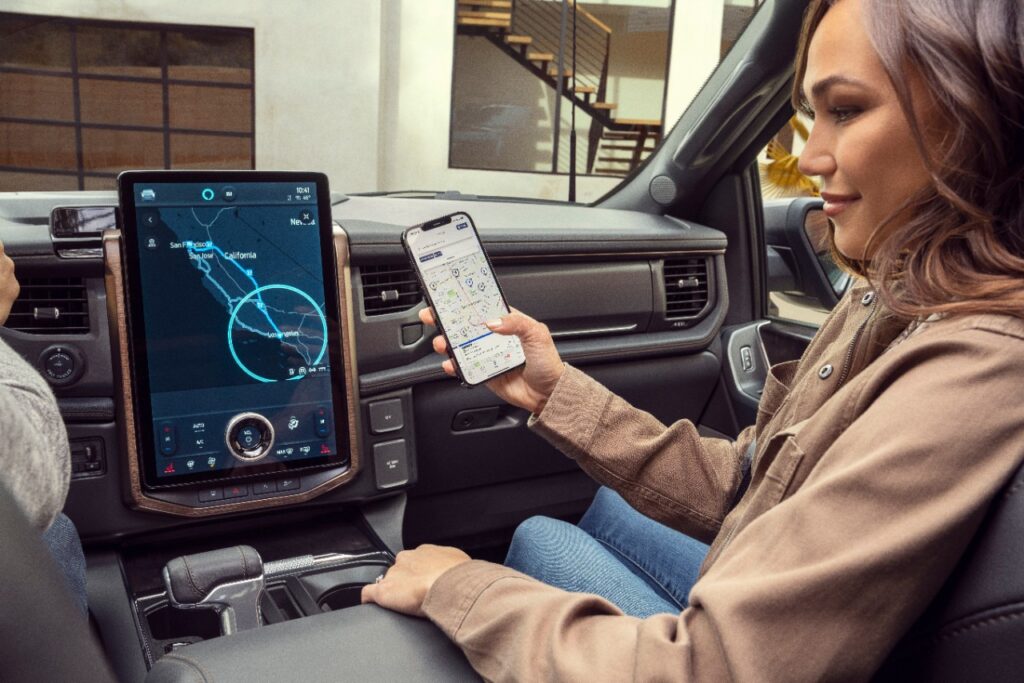
As part of its estimation of when it will next need a charge the system also shares data in the cloud to compare the planned trip with other F-150 Lightning users on similar roads.
“Whether you’re towing with a gas-powered or electric truck, range degradation as a percentage is basically the same – determined primarily by overall cargo and trailer weight at low speeds and by the aerodynamic profile at higher speeds,” said F-150 Lightning chief engineer Linda Zhang. “That’s why we expanded the capabilities of Intelligent Range on the F-150 Lightning with the available onboard scales to also measure the load effects of trailers and cargo to further refine range calculations when towing.”
The “onboard scales” estimates the cargo weight on the Lightning and it works in tandem with the Smart Hitch that measures how much weight is pushing down on the towball tongue.
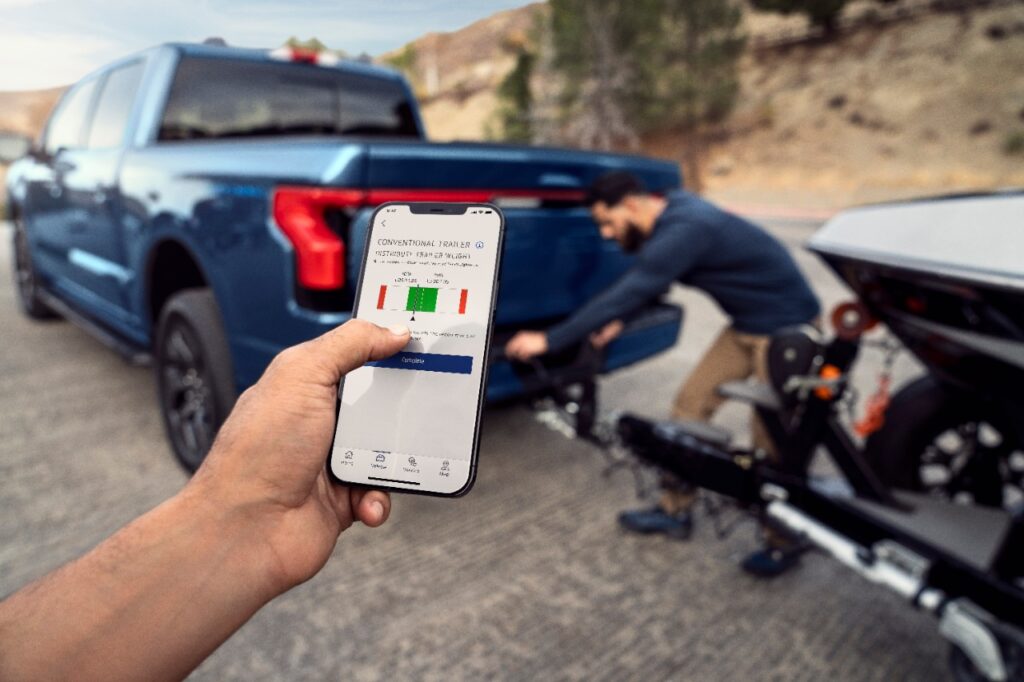
Ford says over-the-air software updates for the F-150 Lightning “will make it even better over time”.
The Lightning’s engineering manager Dapo Adewusi says the company will rely on usage data and feedback from owners.
“Our drive for continuous improvement will get a big boost when we start getting feedback and ideas from customers when they receive their Lightnings.”

